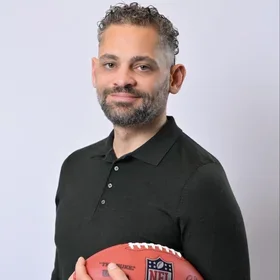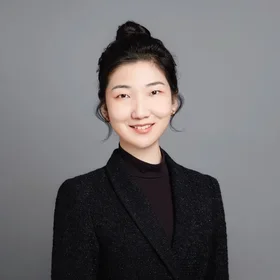By Jaideep Salil
Cherie Henderson, a graduate of Columbia’s Narrative Medicine program and doctoral candidate in communications at Columbia University, first encountered narrative medicine in 2011, when she was a volunteer at Memorial Sloan Kettering Cancer Center. Inspired by its capacity to elevate the patient experience, she has since used its methods to facilitate close reading and reflection with health-care providers, people who have experienced illness, and her church community.
There are the symptoms of a disease, and then there is the story behind it. Narrative medicine is a tool that helps health-care professionals think about not just the disease but the context—the story of how people experience it. Adopting methods such as close reading and reflective writing, it encourages health-care providers to move from the model of “How can I treat this disease?” to “How can I help my patient?”
One current project is Volvox: Making Narrative Medicine Happen, a speaker series where students, alums, and faculty members share and learn about the field’s developments. This is a profile of her engagement with narrative medicine.
How did you develop an interest in narrative medicine?
I was a staff editor and reporter for seventeen years, first at the Miami Herald and then at the Associated Press. Truth be told, I was getting burnt out. The new demands for online content, and how they changed what counted as news, did not sit well with me.
And then I was diagnosed with advanced cancer at age 33. I went through a year and a half of chemotherapy, radiation, and surgeries that left me overwhelmed. A writing group helped me figure out what had happened to me, and I wanted to offer that experience to others, so I started a series of writing workshops at Memorial Sloan Kettering. During that time, Columbia’s Narrative Medicine faculty came to the hospital to conduct a daylong retreat for volunteers. I was floored. I couldn’t believe there was a whole program where people were thinking deeply about stories and the human side of health care. I went home that day and told my husband I was applying to the master’s program, and I enrolled that fall.
How did the Columbia M.S. in Narrative Medicine help you in your career?
The program opened up a whole new world for me. It helped me connect my passion for writing and editing with my newfound interest in health care. Given my own story, I was interested in exploring ways to improve the patient experience. I was thrilled to get to work with pioneers of the field like Rita Charon. Ultimately, it also set me on track for my Ph.D., which focuses on stories told by young people with terminal illness.
Did you have a favorite course in the program?
I took two classes in my first semester, Illness and Disability Narratives with Sayantani DasGupta and Self and Other in the Clinical Encounter with Craig Irvine. Both of them blew me away. The former focused on exactly what drew me to the program, which is why certain stories get told and not others, how those stories are told, and why. Self and Other is philosophy, which is a subject I had barely broached, and I loved it. We talked about our responsibility to each other, which is a very important topic in health care, where power dynamics are prominent. There’s the doctor-patient relationship, but there’s also the way that health-care professionals interact with each other. Does the doctor always outrank the nurse? Does the nurse always outrank the patient-transport clerk? I was also surprised by how the two classes spoke to each other. I would frequently read something for one class and see connections to the other.
I obviously jumped at the chance to study with Rita Charon, the program’s founder. In her class, we used only a few primary texts, so we got to go in-depth in our study of the works. For the midterm, we did an entire paper on a single inch of text from Virginia Woolf’s To the Lighthouse. That might sound impossible, but it was rewarding to examine something so closely.
My final semester included Narratives of Death, Living, and Caring at the End of Life with Marsha Hurst. I picked it partly because I hadn’t yet taken a class with Marsha, and thank goodness I did. Death is universal and endlessly fascinating, and I ended up teaching with her for three years until I started the Ph.D. Now Marsha is my dissertation mentor and a good friend as well.
Tell us about the making of Volvox: Making Narrative Medicine Happen.
Volvox began in 2014 as a place for students and alumni to connect and share their work. People might workshop conference presentations, present papers they’d done in class, or share original artwork. It was often hosted in people’s homes, so it was a lot less formal than Narrative Medicine Rounds, where high-profile writers, clinicians, artists, and theorists speak on big-picture ideas at the intersection of the arts and sciences.
Now Volvox has evolved into a platform where alumni discuss how they’re using narrative medicine in their work. They talk about a particular project, but they also get into the behind-the-scenes details about how they made it happen. We might learn about research findings, for example, but we get very practical information that we can use to put our own ideas into practice. Many of our graduates are at large, traditional institutions—hospitals or medical schools, for example—and learning how to introduce narrative medicine into those spaces is critical. How do I win over my colleagues? Where do I find funding? What are the ethical considerations? These are some of the hands-on skills we address.
How would you describe the relationship between narrative medicine and traditional clinical practice?
A century ago, when the science was not as advanced as it is today, doctors, midwives, and other health-care providers paid more attention to a patient’s experience of an ailment. They had to. We now have far more medications and technology and overall knowledge, but somewhere in there, alongside changes in the business side of health care, the human factor can get lost. I think it’s fair to say the pendulum is swinging back, though.
When I enrolled in the Narrative Medicine master’s program in 2011, a lot of people hadn’t heard of it even within health care. There were fewer than 40 undergraduate health-humanities programs in the United States. Now there are about 140. And when I see new doctors, their ears perk up when I mention my narrative medicine work. More and more of us are recognizing that people treat people, not machines.
That’s not to say that narrative medicine seeks to replace the technical tools of medicine. It absolutely does not. Rather it adds another tool to their toolkit, by spotlighting the humanistic side of health care. Recognizing what’s left unsaid. Recognizing the person and not just the disease.
Columbia University’s Master of Science in Narrative Medicine prepares health professionals, writers, and scholars to apply the skills and values of narrative understanding to improve outcomes for both patients and caregivers. It offers a rigorous and in-depth study of close reading of creative texts, illness and disability narratives, narrative ethics, philosophy, creative writing, and other perspectives.
Fall 2023 application deadlines for the M.S. in Narrative Medicine program are February 15, 2023, for the priority deadline; March 15 for applicants with international documents; and June 15 for the final deadline. Learn more here.


